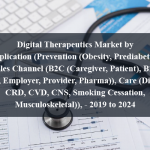OVERVIEW
Research by Global Market Studies has reported a CAGR of 3.5% for the In Vitro Diagnostics (IVD) Quality Control Market, expecting to expand to a value of USD 1.6 billion by 2028.
In vitro Diagnostics (IVD) Quality Control involves monitoring and ensuring the accuracy, precision, and reliability of in vitro diagnostic tests. These tests analyze samples from the human body to diagnose, screen, or monitor diseases. Quality control materials mimic patient samples, assessing system performance and detecting errors. Regular use of controls allows laboratories to validate procedures, identify issues, and take corrective actions, resulting in reliable and accurate test results.
IVD quality control is crucial during analytical validation, daily quality control, calibration verification, troubleshooting, lot-to-lot consistency, and external quality assessment (EQA) to maintain high testing standards and detect errors. It helps detect variations and ensures consistent performance across production lots.
Table of Content
Market Dynamics
Drivers:
The increasing prevalence of chronic diseases, such as diabetes, cardiovascular diseases, cancer, and infectious diseases, drives the demand for accurate and reliable in vitro diagnostic tests. As the number of tests increases, so does the need for robust quality control measures to ensure accurate results. The growing aging population increases the need for diagnostic tests, making IVD quality control even more critical for proper patient management.
Advancements in diagnostic technologies, such as molecular diagnostics, point-of-care testing, and immunoassays, require rigorous quality control procedures to maintain accuracy and reliability. Regulatory agencies worldwide place greater emphasis on the quality and reliability of diagnostic tests, making IVD quality control essential for compliance with standards and obtaining necessary approvals.
Healthcare providers and patients are becoming increasingly aware of the importance of accurate diagnostic testing, driving the demand for stringent quality control practices to ensure patient safety and optimal healthcare outcomes. The trend towards personalized medicine requires precise and accurate diagnostic results, making IVD quality control crucial for tailoring treatments to individual patients.
Opportunities:
Quality Control Materials are essential for assessing the accuracy and precision of diagnostic tests. Manufacturers provide various materials, such as serum, plasma, whole blood, urine, and other matrices, with different analyte concentrations. Third-Party Quality Control provides independent solutions that verify the performance of testing procedures using materials from different sources.
Customized Quality Control Solutions cater to specific needs, allowing for more efficient and targeted assessment. Data Management Solutions track and analyze quality control results, helping laboratories monitor trends, identify potential issues, and implement corrective actions. External Quality Assessment (EQA) Programs provide an external assessment of a laboratory’s quality control practices.
Calibration Verification Materials assess the accuracy of testing instruments and ensure reliable measurements. Support and Training Services are offered by manufacturers and providers to assist laboratories in implementing effective quality control practices.
Restraints:
Quality control materials can be costly, especially for specialized tests, and can be a significant financial burden for smaller laboratories, clinics, or healthcare facilities. Regulatory compliance can also restrain companies from meeting strict quality control requirements, leading to product approval delays.
Limited reimbursement policies may deter healthcare facilities from investing in comprehensive quality control practices. Resource constraints in developing regions can hinder the implementation of robust quality control practices, affecting diagnostic testing reliability and accuracy.
Quality control materials have a short shelf life, making them crucial for accurate testing. Additionally, compatibility with diverse diagnostic platforms and technologies can be a logistical challenge for manufacturers.
Regional Information:
North America:North America is one of the largest markets for IVD quality control. The region’s well-established healthcare infrastructure, the presence of major IVD manufacturers, and stringent regulatory standards contribute to the market’s growth.
Europe: Europe is another significant market for IVD quality control. The region’s robust healthcare systems, increasing adoption of advanced diagnostic technologies, and emphasis on patient safety and quality assurance drive the market’s expansion.
Asia-Pacific: The Asia-Pacific region is experiencing rapid growth in the IVD quality control market. Factors such as a large and aging population, increasing healthcare expenditure, and a rising prevalence of chronic diseases contribute to the market’s development.
Recent Developments:
• In July 2022, BrightSight Inc. launched a digital Connected Diagnostics Platform at the 2022 AACC Annual Scientific Meeting and Clinical Lab Expo. This diagnostic platform is developed for in vitro diagnostics manufacturers that streamline workflows. It includes a Proxy Agent, Analytics Dashboards, Integration Middleware, and Workflow Portals.
• In June 2022, EKF Diagnostics launched its new EKF Link digital connectivity solution for the secure management of point-of-care (POC) analyzers and associated data on one centralized platform.
Key Players:
Bio-Rad Laboratories Inc., F. Hoffmann-La Roche AG, SeraCare Life Sciences Inc., bioMerieux Inc., , BrightSight Inc., EKF Diagnostics and ZeptoMetrix Corporation.
Frequently Asked Questions
1) What is the projected market value of the In Vitro Diagnostics (IVD) Quality Control Market?
– The In Vitro Diagnostics (IVD) Quality Control Market is expected to reach a value of USD 1.6 billion by 2028.
2) What is the estimated CAGR of the In Vitro Diagnostics (IVD) Quality Control Market over the 2023 to 2028 forecast period?
– The In Vitro Diagnostics (IVD) Quality Control Market is expected to grow at a CAGR of approximately 3.5% from 2023 to 2028.
3) Who are the key players in the In Vitro Diagnostics (IVD) Quality Control Market?
– Bio-Rad Laboratories Inc., F. Hoffmann-La Roche AG, SeraCare Life Sciences Inc., bioMerieux Inc., , BrightSight Inc., EKF Diagnostics and ZeptoMetrix Corporation.
4) What are the drivers for the In Vitro Diagnostics (IVD) Quality Control Market?
– Chronic diseases demand accurate, reliable in vitro diagnostic tests, with robust quality control measures essential for patient management. Advancements in diagnostic technologies, regulatory agencies, and personalized medicine demand stricter practices for patient safety and optimal outcomes.
5) What are the restraints and challenges in the In Vitro Diagnostics (IVD) Quality Control Market?
– Costly, regulatory compliance, limited reimbursement policies, resource constraints, short shelf life, and compatibility challenges hinder quality control materials’ implementation in healthcare facilities, clinics, and healthcare facilities.
6) What are the key applications and offerings of the In Vitro Diagnostics (IVD) Quality Control Market?
– IVD quality control, which includes analytical validation, daily calibration verification, and external assessment, is crucial for upholding high testing standards, spotting errors, and guaranteeing consistent performance throughout production batches.
7) Which region is expected to drive the market for the forecast period?
– Asia Pacific has the highest value share in the global market and is expected to dominate shares in forecast period.
Why Choose Us?
Insights into Market Trends: Global Market Studies reports provide valuable insights into market trends, including market size, segmentation, growth drivers, and market dynamics. This information helps clients make strategic decisions, such as product development, market positioning, and marketing strategies.
Competitor Analysis: Our reports provide detailed information about competitors, including their market share, product offerings, pricing, and competitive strategies. This data can be used to inform competitive strategies and to identify opportunities for growth and expansion.
Industry Forecasts: Our reports provide industry forecasts, which will inform your business strategies, such as investment decisions, production planning, and workforce planning. These forecasts can help you to prepare for future trends and to take advantage of growth opportunities.
Access to Industry Experts: Our solutions include contributions from industry experts, including analysts, consultants, and subject matter experts. This access to expert insights can be valuable for you to understand the market.
Time and Cost Savings: Our team at Global Market Studies can save you time and reduce the cost of conducting market research by providing comprehensive and up-to-date information in a single report, avoiding the need for additional market research efforts.












